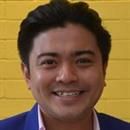The Philippines yet to catch up in manufacturing tech
Manila-based CustomThread is a start-up offering premium custom apparel for teams - from businesses to small communities and school clubs. Company founder-CEO Erik Sy opens up about taking a small idea and turning it into a business and the challenges the company faces as a clothing start-up in the Philippines.
Please tell us about the journey of CustomThread.
CustomThread started as my school project in 2007. As part of our programme in entrepreneurial management in the University of Asia and the Pacific, a private university in the Philippines, we had to put up a business. The original idea was Sy Fashion Enterprise, which was a trading company. I purchase shirts from suppliers and people buy their shirts from me. The biggest change was when we put up a website called SFE.ph when I was a senior. We were getting big corporations as clients even back then so I had two options: one, join the corporate world and become an employee or two, continue the business.
My passion has always been to build organisations to work with people. I told myself that this was the only way I can pursue what I really want. That was why I decided to push through with the business. Two years later, we were able to up a small office.
Back then, our business was still very traditional; we just bought and sold goods. A year after we opened the office, we were able to put up a small factory. It's just a refurbished house where we do manual printing and sewing. It took another year till I met my co-founder, Carlson Ngo. He's a tech wizard who believed in what I was doing. I made him my chief technology officer (CTO) and that was the time we became a fashion-tech startup. We wanted to be able to approach things differently. We standardised the process, enhanced the website and renamed it CustomThread.
Since then, CustomThread has been a work in progress. From a one-man team, we're now over 100 employees and we moved to a bigger headquarters, where we now have more machines for customising apparel. Lester Fuentes joined my team as our chief sales officer (CSO) and Rogelio Maniago joined in as our chief operating officer (COO).
What is the USP of CustomThread products?
We are creating a new standard for customer service in custom apparel - from inquiry, apparel design, sales processing and high-tech production to logistics. We provide convenient service, consistent quality and an efficient platform.
We have two platforms - CustomThread.com and Fundr.ph. CustomThread.com is for B2B services, where people can browse through our products like shirts, jackets, bags, umbrellas and caps. They can also create their design mock-ups through the site so that our team can offer them accurate quotations.
Meanwhile, Fundr.ph caters to graphic designers, bands, NGOs and other teams who want to create and sell shirts online without inventory. They simply have to create their Fundr shop, upload their design and share it to their friends; we handle the customer service, delivery and all the backend work while the shop owner earns.
What is the size of the market for personalised clothing globally?
It is currently $27 billion in Southeast Asia.
Which are your major markets?
We are currently targeting the Philippines, Australia and other Southeast Asian countries like Singapore.
Do you take small orders? What is the minimum order requirement? What is the average lead time for orders?
As with many others, we cater to wholesale orders. We can handle even up to 1 million customised units at a time, but of course, it will take us a bit longer. Our lead time always depends on the volume of the order. We are also able to serve smaller orders. If you just want one shirt, we can customise that within a day.
How big is your design team?
We have seven graphic designers. Some are focused on our marketing while others are on the apparel design. We help some of our clients and design their clothes.
What is the annual production capacity at your units?
It would be around 200,000 to 350,000 units depending on the complexity of what we need to produce.
Where do you source raw materials and accessories from?
We make sure our raw materials are of top-notch quality. We are continuously developing a wider range of suppliers that can provide the quality that matches our standards.
What challenges did you face as a start-up?
Aside from the usual challenges of being a startup, we also have to deal with the difficulties of how the Philippines is yet to catch up in manufacturing technology. We are also trying to raise the standards in manufacturing by integrating the system from supplies, production to sale to supplier.
What are your future plans?
We want to be the household name for custom apparel in Southeast Asia. It is a big dream, we know, but I am confident our team can do it.
Please share your details in the last fiscal and expectation in the next two years.
We are excited for the plans we have in store for 2018. We cannot get into the details right now, but will announce some new projects soon. Please keep visiting our Facebook page to stay updated. (HO)

